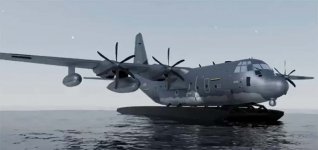I can’t remember where I heard that, but I remember someone explained that to me also.At some point, someone told me that a coalition context, there are tons of shooters. There are never enough spotters (ISR platforms), transports, and tankers.
Fighter jets are actually one of the cheapest ways to contribute to a coalition operation. They are also fairly safe in terms of risk, so countries can be seen to be active participants without having to accept higher risk
- The pilots, aircrew, and ground crew/technicians are all getting paid whether they are deployed or not. If deployed, they are paid more - but the salaries get paid regardless.
- The jets use fuel all the same, whether they are flying in the air above Iraq, Cold Lake, Alaska, Europe, etc.
- Unused munitions that are going to expire either need to be expended, or retired/disassembled. So whether it is a training target on a range, or a real target in an AO - preference is to use the ordinance.
Having fighter jets taxiing around with missiles and bombs visible, and some good camera work of them taking off to “go do some good thing somewhere” looks awesome, always. Government looks good, military looks good, helps with recruiting, national image, etc.
Heavy movers & strategic airlift, along with dedicated ISR and EW assets, are usually in short supply.
Not many countries bother to invest in a proper EW aircraft, or a dedicated C2 platform - so the ones that are participating in a coalition are usually a decent chunk of what’s available in total.
Lose an F-16 due to aircraft failure or enemy fire? Probably fairly easy to send in a replacement in short order. Lose a C-17, or refuelled that isn’t USAF? Not so much.
(Can’t remember where someone was explaining this to us. But it was while we were down in the US, and the person explaining it was involved in coordinating hanger space for repairs/maintenance for coalition aircraft operations. Made sense when he explained it.)







